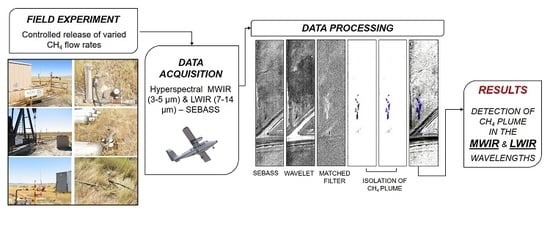Detection of Methane Plumes Using Airborne Midwave Infrared (3–5 µm) Hyperspectral Data
Abstract
Share and Cite
Scafutto, R.D.P.M.; De Souza Filho, C.R. Detection of Methane Plumes Using Airborne Midwave Infrared (3–5 µm) Hyperspectral Data. Remote Sens. 2018, 10, 1237. https://doi.org/10.3390/rs10081237
Scafutto RDPM, De Souza Filho CR. Detection of Methane Plumes Using Airborne Midwave Infrared (3–5 µm) Hyperspectral Data. Remote Sensing. 2018; 10(8):1237. https://doi.org/10.3390/rs10081237
Chicago/Turabian StyleScafutto, Rebecca Del’ Papa Moreira, and Carlos Roberto De Souza Filho. 2018. "Detection of Methane Plumes Using Airborne Midwave Infrared (3–5 µm) Hyperspectral Data" Remote Sensing 10, no. 8: 1237. https://doi.org/10.3390/rs10081237
APA StyleScafutto, R. D. P. M., & De Souza Filho, C. R. (2018). Detection of Methane Plumes Using Airborne Midwave Infrared (3–5 µm) Hyperspectral Data. Remote Sensing, 10(8), 1237. https://doi.org/10.3390/rs10081237




